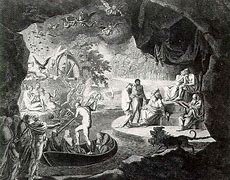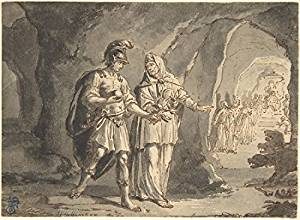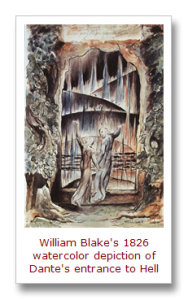In A Terribly Strange Bed by Wilkie Collins, I noticed the passages on pages 32-35 when Mr. Faulkner describes his experience with drinking. He uses words like “drinking liquid fire”, “flame”, “mad state of exhilaration”, “violent singing”, and “my body trembled”. These are all really dramatic, intense words to describe his current state. All of these descriptions help further tie into the first couple paragraphs on page 32 when most of the dialogue ends in exclamation points. These small details demonstrate the crazy haze of events that are happening and will continue to happen to the narrator throughout the rest of the story, especially in regard to the bed. The narrator says, “No excess in wine had ever had this effect on me before in my life”. This shows that Mr. Faulkner has never lost control like this before. The overarching idea that struck me after reading this passage was that Victorians must be obsessed with the idea of losing control. The narrator in this story quickly loses control of himself after he drinks, and Lady Audley loses control of herself once her secrets are revealed at the end of Lady Audley’s Secret. This leads me to believe that the people in this time must be concerned with how easy it is to lose control of oneself. Collins associates this behavior with violence and chaos, by saying things like the words listed above. This might be a kind of warning, reminding people that although losing control of oneself may seem enticing and alluring like a flame or fire, it is also dangerous and harmful to your life, and potentially your fortune.
Course Blog
Witchery and Tea: A Lady’s Weapon
This passage describes the act of making tea as an occupation for women. One that allows her to “reign omnipotent” amongst the visitors in her home (Braddon, 222). With this power, the act of making tea also provides for a darker undertone: “The most feminine and most domestic of all occupations imparts a magic harmony to her every movement, a witchery to her every glance” (Braddon, 222). Women are grouped with witchcraft here because they have power in this task and the loss of power is a point of unease for a guest. This passage mentions the “floating mists from the boiling liquid in which she infuses the soothing herbs, whose secrets are known to her alone” which tells us that in drinking what is given to them a guest trusts their host. It is a social act to receive people into your home and to serve them a beverage of your choice. The lady of the house has that power in these situations. She would make the mixture. She would pour the tea into portions of her choice. If one comes into the Lady’s home, she decides how they will be served. In this passage we even see the narrator mention the possibility of the task being given to servants, “ To send a couple hulking men about amongst your visitors, distributing a mixture made in the housekeeper’s room, is to reduce the most social and friendly of ceremonies to a formal giving out of rations” (Braddon, 222). In giving the task to someone else, the entire ceremony of receiving visitors is violently changed. A moment that is meant to be inviting to outsiders would become very formal and rigid without the ease of the Lady of the house making the visitor feel personally welcomed into the space. In handing over power and giving the Lady your trust, a visitor is awarded a sense of personal invitation in which they can feel safe despite their lack of control.
Robert’s Laziness
There is a reoccurring theme in this book about Robert Audley being lazy and George leaving him during his restful moments. On pg. 75, the first page of the chapter “After the Storm”, Robert is described as sitting through the storm the same way he does every thing else in life: by lying on the couch, reading days old newspaper. Within the same paragraph, they transition to talking about George Talboys who is active, fearful of the storm, and moving around the room, and leaving him to go outside to walk in the rain. On pg. 99, the first page of “Troubled Dreams”, Robert Audley is described using the word “lazy” once again, but this time in a complimentary way, as he is has been searching relentlessly for George Talboys. Within this same paragraph George Talboys is brought up talking about George as to how he left Robert again, but this time while he was being lazy, sleeping during fishing much like the language used on pg. 75. After the narrator is complimentary of how hard Robert has worked for 48 hours trying to find letters that George left behind, the narrator delves into Robert’s sleep and dreams. He goes to bed until he woken up by someone at the door. The narrator’s language surrounding Robert has led me to believe that they blame, in some way, George’s disappearance on Robert’s laziness. If he had just been up while they were fishing maybe George wouldn’t have disappeared. Even the way that the narrator depicts Robert’s search for George is sluggish, taking breaks for naps frequently and moving slowly on the mystery of his disappearance. I would argue that the language the narrator uses is purposeful. In a few paragraphs the narrator is describing George and Robert as binaries, one passive and one active. In more than one case as well, the narrator is connecting Robert’s lazy, sleepy nature to George being gone and having left during that time of rest.
Lucy After the Storm
I have chosen to analyze the third paragraph on page 78 of the novel that details Lady Audley’s behavior after the storm. This passage describes the sharp contrast between the frightened Lady Audley and her behavior after the storm that caused her to behave strangely. The passage parallels the passages on the previous page, which detail George Talboys’ similar reaction after the storm. In this passage, Lucy is compared to fresh flowers and birds. Her cheeks were described as being pink, indicating passion and liveliness, and she was described as beautiful and joyous in the same way that the birds were. This imagery comparing her to birds is continued when the author describes her singing as warbling. The passage is full of imagery of nature, flowers, and light. Nature is a common motif throughout the novel, often used as further indication of how a character feels. The passage shows how Lucy’s behavior contrasts how she felt during the storm, as she felt much happier in the safety of the daylight. In the next paragraph, her husband recounts, “Do you know, Lucy, that once last night, when you looked out through the dark green bed-curtains, with your poor white face, and the purple rims around your hollow eyes, I had almost a difficulty to recognize my little wife in that ghastly, terrified, agonized-looking creature,” which sharply contrasts the imagery in the paragraph before it (Braddon 78). Like a child, Lucy is afraid of the storm as well as many other common fears in childhood such as dogs and even cows. This passage reveals to the audience that Lucy has odd, childlike behavior and yet is similar to George in that they were both terrified of the storm and recovered beautifully afterwards. This passage foreshadows a possible link between Lucy and George to be explored later in the novel, and uses imagery of nature to convey Lucy’s emotions.
“What’s in a painting” – or how we see past initial appearances of a character
“The perfection of feature, the brilliancy of colouring were there; but I suppose the painter had quaint medieval monstrosities until his brain grown bewildered, for my lady, in his portrait of her, had something the aspect of a beautiful fiend” (Braddon 107)
This little passage is strikingly intriguing: in the context of the scene, it involves Robert and George discovering a painting done of Lucy Graham, now the new Lady Audley, whose painting is described above by our yet unknown narrator in much contrast to how she is originally described. Early on in the novel, Lucy Graham is portrayed as someone “lovely and innocent”(Braddon 49) and now she is described as resembling a “beautiful fiend” in her painting.
As far as history goes, there has been a pervasive idea that a portrait contains a part of someone’s soul, and thus offers a glimpse into their true nature. Contemporary literature at the time like Robert Browning’s My Last Duchess poem and Oscar Wilde’s Picture of Dorian Gray all played around with the idea of a painting being thematic to express a look into someone’s true character. Similarly, up till now, Lady Audley’s duality has been alluded towards sparingly, but made more explicit with the notion of her being a hidden monster, that a painter had been able to look past her surface and into her inner thoughts, and exposed her for what she is.
The imagery described, references to “quaint medieval monstrosities” gives us a visual idea of what might be running through the painter’s head as he worked on it, and the description of him becoming ‘bewildered’ shows strong language that wants us, the reader, to understand the growing horror of the painter as it dawned on him, that Lady Audley was not who she really was.
You Can’t Ask Too Much of Me
On page 16 Lucy responds to Sir Audley’s proposal. Her speech caught my attention because the raw emotion she exhibited. Which, allowed me to better undertsand and relate to her character. Braddon chose to start off this paragraph with emotional words that also revealed the importance of the passage, such as passion, agitated, shrill, piercing, and distinct. These words allowed me to better undertsand what Lucy is going through and how imperative her statements are to her beliefs and actions in the novel. After, Braddon adds statements of doubt that show Lucy’s lack of confidence and foreshadow her having a dark past. Lucy’s states that “There are women a hundred times my superiors in beauty and in goodness.” This surprised me because the pages leading up to her speech talked so much about her beautiful outward appearance. Lucy then repeats the 3 times that “you ask too much of me” (Braddon 16.) At first, I was confused by Lucy’s doubt, but then I realized that her Lucy’s appearance was not the only thing she was worried about. Braddon foreshadows that Lucy’s previous actions are also are also stopping her from being a worthy wife. Lucy then reveals the struggles of impoverished past, she explains that “Her father was a gentleman; clever, accomplished, generous, handsome – but poor.” (Braddon 16). This juxtaposition shows that Lucy understands the importance of wealth, Lucy says all these redeeming qualities about her father but finishes off with “but poor” potentially indicating that in her wealth trumps everything else. Lucy finishes of her speech by saying “I cannot be blind to the advantages of such as alliance” (Braddon 16.) This again shows her understanding of what wealth can do, but may also explain her thoughts on the marriage. Lucy calls her marriage an alliance, hinting that she is not in it for love but rather the benefits it will give her.
Audley Court as the Underworld
“The sun was low in the skies as they took a short cut through the meadows, and crossed a stile into the avenue leading to the archway– a lurid, heavy-looking, ominous sun-set, and a deathly stillness in the air, which frightened the birds that had a mind to sing, and left the field open to a few captious frogs croaking in the ditches,” (Braddon 67).
I believe Braddon is intentionally presenting the Audley Court as the underworld. It is grand (the underworld is often associated with jewels and wealth) but eerily still, with a literally “deathly” lack of movement. The sun-set (note that the sun is going down, leaving the world in darkness and bringing out the predators and fears of the night) is “lurid, heavy-looking, ominous…” and leaves behind it none of the suggestions of life or vitality that are often coupled with sun imagery– in fact, Braddon gives us the opposite. The “short cut” and “meadows” that George and Robert take suggest danger (short cuts make long delays, Persephone is stolen in a meadow) that great mythological heroes often face when straying from assigned paths (Odysseus, Theseus, etc.). The “archway” that Braddon describes is a symbol associated with the underworld (see images below). The implication of presenting Audley Court as such just as our “hero” (George) and his friend (Robert) makes it clear that this will be the end of the current phase for them. It also implies that the inhabitants (Lady Audley) are not so innocent or lively as they intentionally present themselves as being.


Arnold Houbraken, Alamy Stock Photo

https://www.youtube.com/watch?v=Gt3H5bBJypU
Link: (0:46-End) Sirius Black death: passes through archway
False Appearances
“Foul deeds have been done under the most hospitable roofs, terrible crimes have been committed amid the fairest scenes… I believe that we may look into the smiling face of a murderer, and admire its tranquil beauty” (Braddon, 143-144).
This passage comes from an exchange between Robert Audley and Lady Audley during an unexpected visit she makes to the inn. Robert demonstrates his role as the detective, suspecting that his dear friend, George Talboys, has been murdered, possibly in an unexpected place: the domestic home. Robert emphasizes the ironic situation of a horrid event occurring in a seemingly safe place. He explains that “foul deeds” and “terrible crimes” have taken place “under the most hospitable roofs” and “amid the fairest scenes.” The contrast between the harmful acts and peaceful environments implies the greater theme of false appearances throughout the novel. Furthermore, Robert detects false appearances in people, specifically murderers. He states, “I believe that we may look into the smiling face of a murderer, and admire its tranquil beauty.” He reveals his beliefs that a calm and appealing exterior, in this case a “smiling face,” may belie an ugly and dangerous truth, which potentially foreshadows that one or more of the characters in the novel will be discovered to possess a shameful secret or mad behavior. The barrister acknowledges that “we” are oblivious to the dark secrets and crimes that are occurring, suggesting that the characters are being deceived by a harmless appearing “atmosphere,” a house, or another character in the novel. However, because the conversation is between Robert and Lady Audley, the barrister may be hinting that Lucy, herself, is the one who’s innocent appearance is concealing a dreadful secret.
Blog Post #1
One paragraph that stood out to me in Lady Audley’s Secret was the first paragraph on page 57. In what seems to be an act of foreshadowing, Braddon is describing a beautiful countryside in comparison to cruel murders. Tranquil words such as “quiet”, “rustic”, “sweet”, and “calm” are used in comparison to cruel words such as “agonies”, “poisoned”, and “violent.” The words murder and peace are repeated throughout the paragraph, juxtaposing the beauty of nature and peace with the violent nature of man. The “spreading oak, whose very shadow promised – peace” is juxtaposed with “sudden and violent death by cruel blows”, displaying the antipode ideas of peace and chaos. Braddon describes a meadow on a quiet summers day contrasted with the murder and betrayal of a young woman by the man she loved and trusted, introducing the idea of evil in what seems to be a tranquil place. The contrast between chaos and peace is perpetuated by the lengthy, vivid crimes, ending with just one word – peace. By incorporating the emotions of chaos and peace into the same sentences, Braddon juxtaposes the images of violence and beauty. This suggests that chaos and beauty are not exclusive from each other. This idea of beauty and tranquility hiding dark, cruel secrets and the suggestion that chaos and beauty are not exclusive may be indicative of Lady Audley. Throughout the book, she is continually described as being an unmistakably beautiful girl, but this passage may be suggesting that she is hiding darker secrets
What is Lady Audley’s Secret?
In the novel, Lady Audley’s Secret, by Mary Elizabeth Brandon there have been many secrets and mysteries that have presented themselves throughout the course of volume one. Aside from the disappearance of George Tallboys, one of the largest mysteries is what exactly is Lady Audley’s secret? A passage on page 91 leads me to believe she had something to do with Georges disappearance, and that the two huge secrets in this novel are intertwined. “It was not one, but four slender, purple marks, such might have been made by the four fingers of a powerful hand that had grasped the delicate wrist a shade too roughly…Across one of the faint purple marks there was a darker tinge, as if a ring worn on one of these strong and cruel fingers had been ground into the tender flesh” (Brandon 91). This passage originally struck me as interesting because it contained a clue to one of the mysteries. Sir Michael Audley is narrating this passage and has noticed these marks on Lady Audley’s wrist. She protests that it was only a ribbon that caused them, but her determination to make everyone believes this leads me to believe she is trying to hide something. The contrasting language in the passage, such as powerful, strong and cruel, vs. tender and delicate as well as the repetition of fingers and four point to the main idea of the passage- four rough fingers left the marks on Lady Audley, not a ribbon. I believe the fingers belong to George, who was last seen at Lady Audley’s house before his disappearance and potential murder. I assume he would have been wearing a ring because of his long-standing love for his late wife.